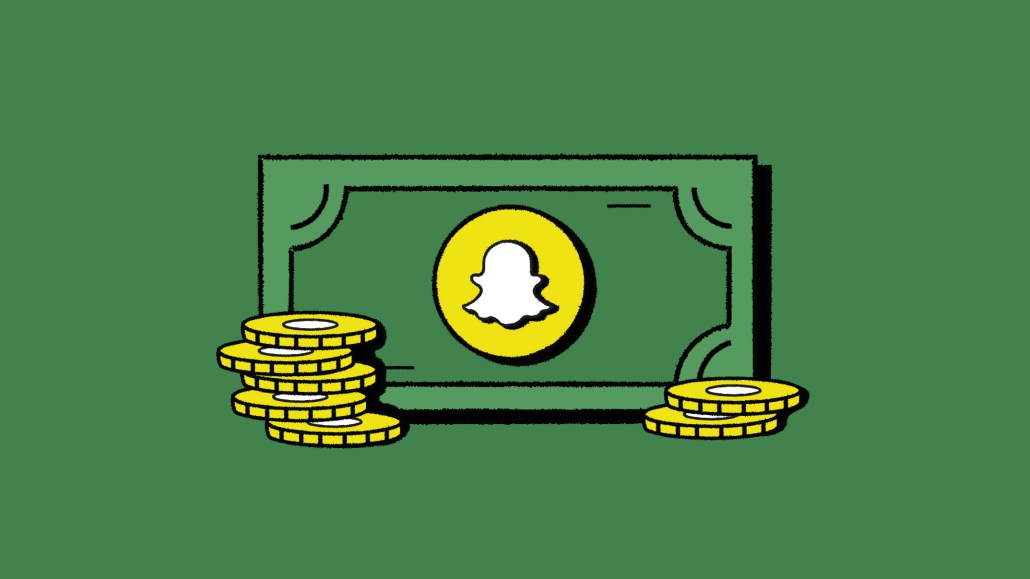Save 50% on a 3-month Digiday+ membership. Ends Dec 5.
Why Snapchat is pitching its platform as an alternative to social media

The initial promise of social media was one of connection — use these various platforms and stay in touch with your friends and family no matter what. But as social media has evolved, the original intent has seemingly been put on the back burner in favor of engagement, influencers and entertainment, changing the way consumers interact with the medium.
Snapchat’s latest brand campaign pitches the platform as an alternative to the current state of many social media platforms, harkening back to the days of using social media as a way to connect with friends and family. This month, the platform has used two of the few monoculture live events — the Grammy’s and the Super Bowl — that consumers tune-in to pitch the message to consumers as well as marketers.
While the potential efficiency of those ad buys factored into the choice to roll out the new brand campaign at those events — the Grammy’s scored almost 17 million viewers this year while the Super Bowl nabbed an all-time high of 123.7 million viewers — efficiency was just one element. Snapchat wanted to show up with a message about connection during events that huge numbers of people gather around, explained Snapchat chief creative officer Colleen DeCourcy.
“Sports and music are [some of the ways] people are able to connect to each other and to culture,” said DeCourcy. “You will see us across this year lean into sports, music and the places that we know our community loves to have those real life experiences together, the concept of fandom and what it does for shared interest.”
While the platform isn’t planning to spend more on advertising than it has in the past, Snapchat is “changing the strategy of how we go to market,” said DeCourcy, adding that the platform will be showing up at events that are meaningful for its users and focus on connection.
“What we’re [focusing] more on is showing up for people and bringing value to those environments,” said DeCourcy. “You’re going to see partnerships, forums, discussions, a focus on redoubling down on the parts of our products that really make people feel good and connected. You’re going to see a brand that’s a living brand in action, having behavior in the world that illustrates to people what it means for there to be more Snapchat in their lives.”
Aside from showing up over consumers’ shared interests, Snapchat will tout the new brand positioning with the linear TV spot, out-of-home media in cities like New York, Los Angeles, Atlanta, St. Louis and Chicago, among others, as well as print and digital ads. It’s unclear how Snapchat is dividing the ad budget as DeCourcy did not share specifics.
Ad position: web_incontent_pos1
Throughout January to November 2023, Snapchat spent $21.5 million on media, according to data from Vivvix, which found that during the same time period in 2022 the platform spent $14.4 million.
“As social platforms come under continued scrutiny, particularly due to its negative impact on teens (as we saw highlighted at the recent congressional hearings), Snapchat’s repositioning is a smart counter-narrative,” said Brendan Gahan, entrepreneur and former chief social officer at Mekanism. “They become the ‘safe’ platform for teens. Important as parents and lawmakers call for regulation and scrutiny for platforms like Meta.”
Still, even if the pitch may help differentiate the platform, competition with social behemoths remains stiff, making industry analysts skeptical of its ability to compete for ad dollars at scale.
“Snapchat’s effort to prioritize community and connections is a smart way to differentiate itself (and probably better for users), it faces the daunting task,” said Gahan. “How can Snap really compete with giants like Meta, TikTok, and YouTube? With just over 400 million [daily active users] it’s dwarfed by the billions at Meta, YouTube, and TikTok. Additionally, Snap’s $1.36 billion in [fourth quarter] ad revenue barely compares with Meta’s $38.7 billion last quarter.”
Allen Adamson, brand consultant and co-founder of Metaforce, echoed that sentiment. “They just don’t have the scale,” said Adamson. “Big advertisers like to buy big eyeballs.”
More in Marketing

Ulta, Best Buy and Adidas dominate AI holiday shopping mentions
The brands that are seeing the biggest boost from this shift in consumer behavior are some of the biggest retailers.

U.K. retailer Boots leads brand efforts to invest in ad creative’s data layer
For media dollars to make an impact, brands need ad creative that actually hits. More CMOs are investing in pre- and post-flight measurement.

‘AI is permeating everything we do’: How Guitar Center developed 2 AI tools this year
This summer, the company launched a chatbot called Rig Advisor to help customers find the right instruments and products.
Ad position: web_bfu





